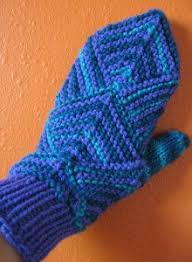 I started in my last post talking about older loved ones and “aging in place.” That first post was about the aging part and Activities of Daily Living. In this installment, I have a tip on how to assess the “place” part of aging in place. I call it the “mitten test.”
I started in my last post talking about older loved ones and “aging in place.” That first post was about the aging part and Activities of Daily Living. In this installment, I have a tip on how to assess the “place” part of aging in place. I call it the “mitten test.”
If you live in the upper portions of the U.S., your winter mittens may just about be ready for the storage closet. But your mittens have another useful purpose that can help you make home an easier place for your older loved ones. You can use them to identify spots in your loved one’s home that can be adapted to fit their changing capabilities. As our bodies age, certain of our nerve pathways begin to fail, and the human anatomy uncannily reroutes many of the circuits as they stop firing. But with age, more and more of those pathways may slow or fail for a variety of reasons, and it just makes it harder for older adults to do the simple manual tasks they used to do without even a thought.
Turning a door knob, turning on a lamp or taking the lid off a jar become challenging, maybe even impossible. It is hard for those of you who may be in the prime of your lives to really get this, no matter how empathetic, so I recommend an easy exercise to help you experience what this erosion of manual dexterity and fine motor skills feels like. In doing so, you can also help identify challenging hardware or activities that can be more easily managed with a bit of creative help.
With a pair of mittens, walk through each of the rooms in your elder loved one’s home and go through the normal activities of the person who lives in those rooms. As you enter a room, it is may be more challenging to flip a light switch or twist the switch on a lamp with your hands in mittens. These can be remedied by retrofitting wall switches with the larger rectangular switches that one merely presses on and off. Likewise, the lamp twist switches that are challenging with mittens can be replaced with wider winged grips. And even before you enter a room, the door knob may be your undoing if the knob is too small or too slippery. Handles may be an appropriate replacement.
The mittens are effective barriers to everything from opening the ketchup bottle to a twisting the lid on a jar of apple sauce or beverage bottle and more. And if a key itself is hard for an older loved one to grip when opening a door, hardware stores have over-sized sheaths to make gripping easier.
With your mittens still on, try tying your shoe laces or buttoning a shirt or blouse. It may be time to get creative with Velcro-equipped shoes or other substitute hardware for buttons. And go through the motions of other self-grooming activities to determine what challenges are manageable and which are just out of reach. The number of what are called “assistive devices” will amaze you as you look to television remote controls, computer access and more. Check out the Department of Health and Human Services Assistive Technology site.
Charlotte Bishop is an Aging Life Care Advisor, Geriatric Care Manager and founder of Creative Care Management, certified professionals who are geriatric advocates, resources, counselors and friends to older adults and their families in metropolitan Chicago. She also is the co-author of How Do I Know You? A Caregiver’s Lifesaver for Dealing with Dementia.






